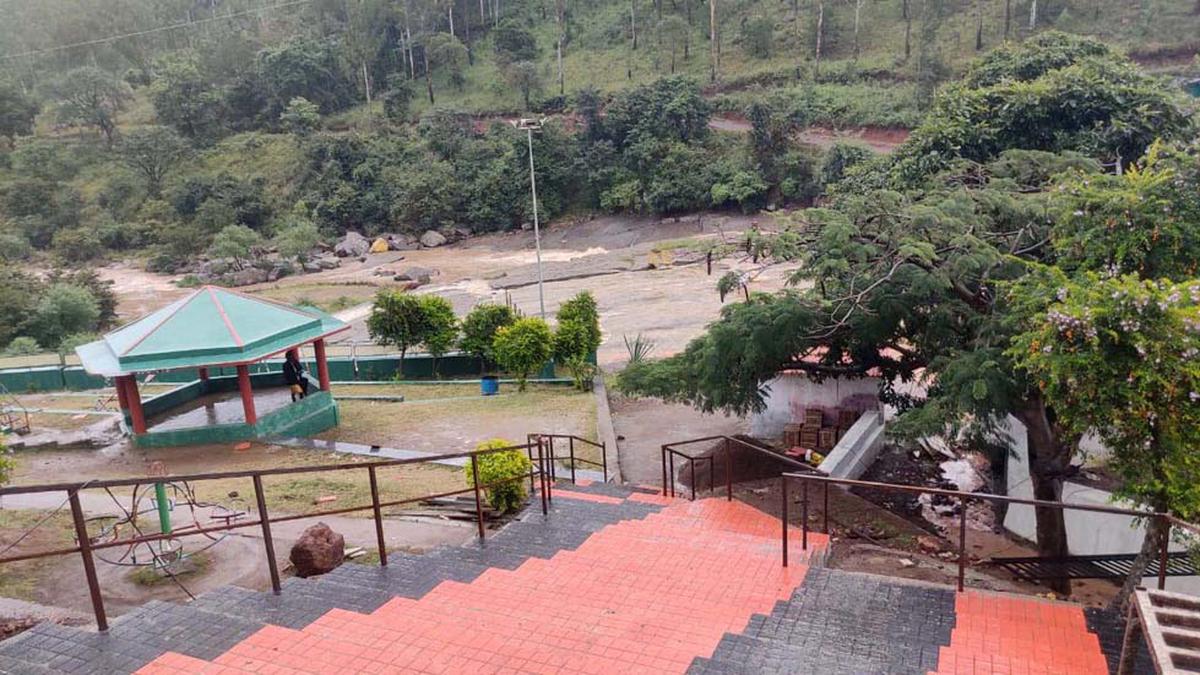
Chaparai waterfalls to get a facelift
The Hindu
ITDA Paderu is giving a major facelift to the popular Chaparai waterfalls in Araku valley, with new amenities & security measures.
The Chaparai waterfalls - a popular tourist spot in the Araku valley, is undergoing a major facelift as part of the ‘Chaparai Cascade’ project.
The Integrated Tribal Development Agency (ITDA) has taken up the project on a priority basis and has initiated development works a few months ago, which are expected to be completed by December 20.
Earlier, tribals from several panchayats participated in the tenders to get the maintenance contract of the waterfalls. They used to collect a fee of ₹10 for entry into the park. Due to lack of basic amenities, tourists coming from different places used to face inconveniences.
Six months ago, ITDA Paderu took over the waterfalls and engaged its employees for maintenance. The Engineering Department in association with the ITDA Tourism Cell has prepared plans for the facelift with an estimated budget of ₹35 lakh.
As part of ‘Chaparai cascade’, under the supervision of ITDA Project Officer, V Abhishek, a children’s park is under construction inside the tourist attraction. A bigger stage will be replacing the existing ‘stage’, which is being used for cultural activities, especially for the tribal dances to entertain the tourists. Granite sitting benches, drinking water facility, toilets, changing rooms, footpaths and lighting are being provided.
The ITDA has also given a facelift to the existing temple in the area to honour the sentiments of the tribals.
Now, with a national highway passing just beside the park, a compound wall has been constructed. A dedicated parking lot for two/four wheelers has been arranged. A new bus shelter was built for the visitors. Improved security measures will also be provided at the waterfalls.

Hampi, the UNESCO-recognised historical site, was the capital of the Vijayanagara empire from 1336 to 1565. Foreign travellers from Persia, Europe and other parts of the world have chronicled the wealth of the place and the unique cultural mores of this kingdom built on the banks of the Tungabhadra river. There are fine descriptions to be found of its temples, farms, markets and trading links, remnants of which one can see in the ruins now. The Literature, architecture of this era continue inspire awe.

Unfurling the zine handed to us at the start of the walk, we use brightly-coloured markers to draw squiggly cables across the page, starting from a sepia-toned vintage photograph of the telegraph office. Iz, who goes by the pronouns they/them, explains, “This building is still standing, though it shut down in 2013,” they say, pointing out that telegraphy, which started in Bengaluru in 1854, was an instrument of colonial power and control. “The British colonised lands via telegraph cables, something known as the All Red Line.”

The festival in Bengaluru is happening at various locations, including ATREE in Jakkur, Bangalore Creative Circus in Yeshwantpur, Courtyard Koota in Kengeri, and Medai the Stage in Koramangala. The festival will also take place in various cities across Karnataka including Tumakuru, Ramanagara, Mandya, Kolar, Chikkaballapura, Hassan, Chitradurga, Davangere, Chamarajanagar and Mysuru.








